Abstract
We have studied the efficacy of three devices designed to conserve oxygen delivered to patients with hypoxic chronic bronchitis and emphysema. Devices A and B are valve systems, which deliver oxygen only during inspiration. Device C is a modified nasal prongs system incorporating a "moustache reservoir" (Oxymizer, Chad Therapeutics Inc, Woodland Hills, California), which is claimed to produce a higher arterial oxygen saturation (SaO2) from a given flow of oxygen than does continuous delivery through nasal prongs. Devices A and B were found to give the same oxygen saturation as continuous flow oxygen, but only device B reduced the flow of oxygen significantly (p less than 0.01). The flow characteristics of device A were likely to be the cause of this failure to conserve oxygen. Device C produced a higher mean rise in SaO2 than did standard nasal prongs at all oxygen flow rates, and was able to achieve the same rise in SaO2 as standard nasal prongs with a small (25-33%) saving in oxygen delivery. There was, however, considerable variation between patients in the oxygen saving efficiency of device C, with little or no oxygen saving in seven of the 12 patients studied.
Full text
PDF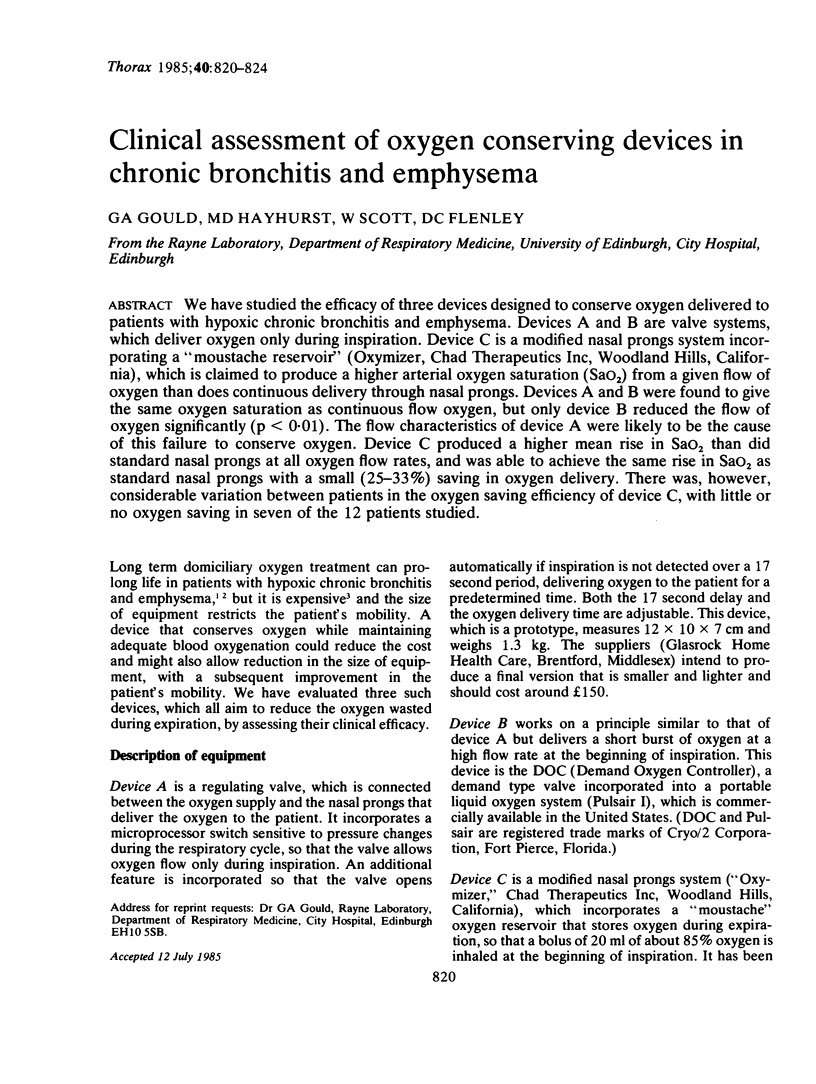
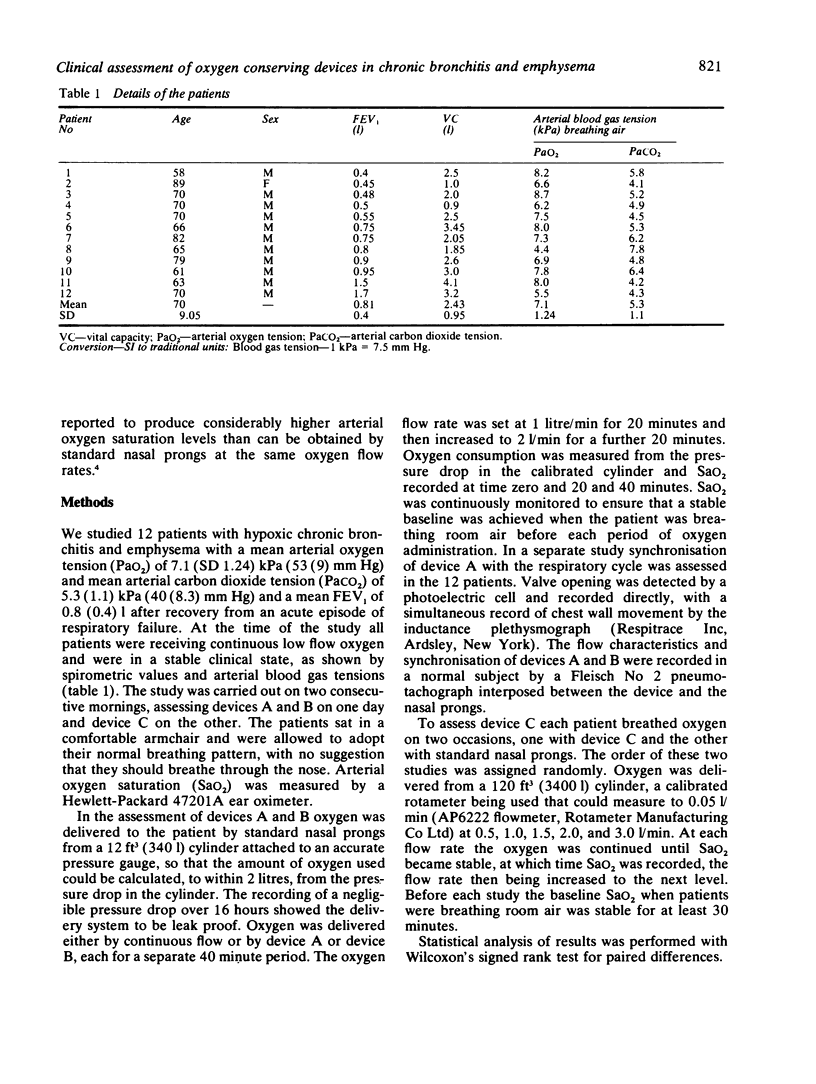
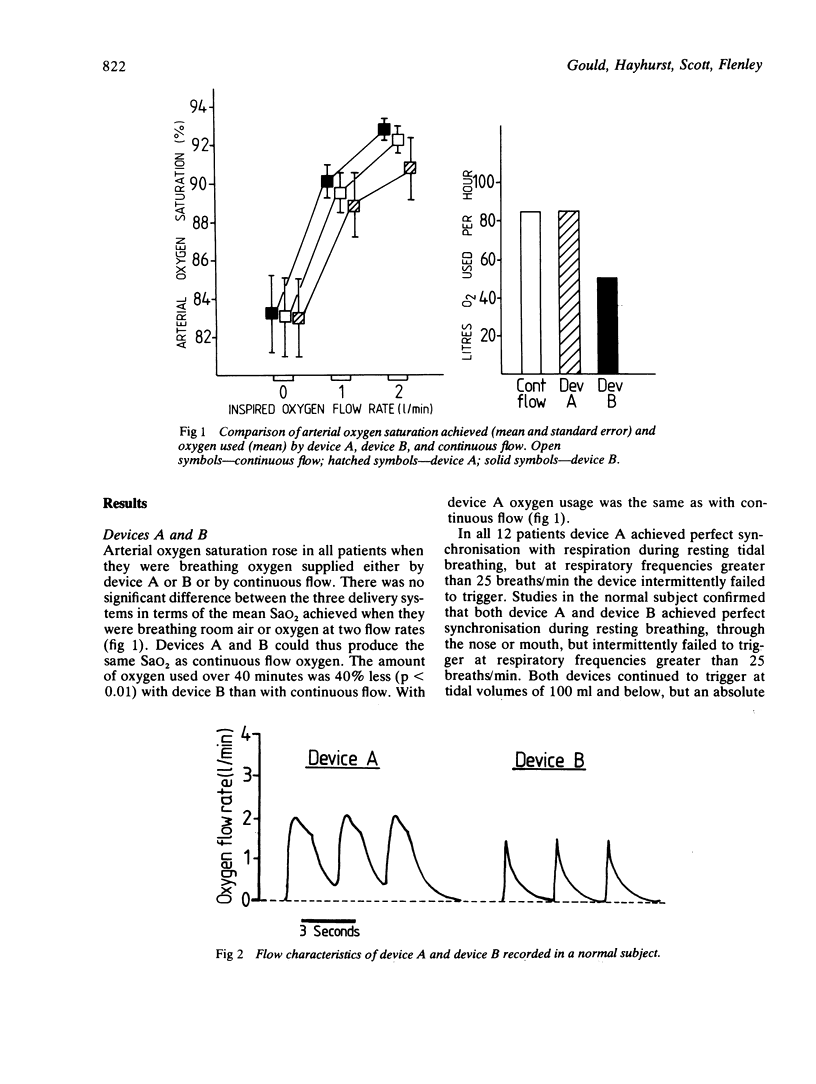
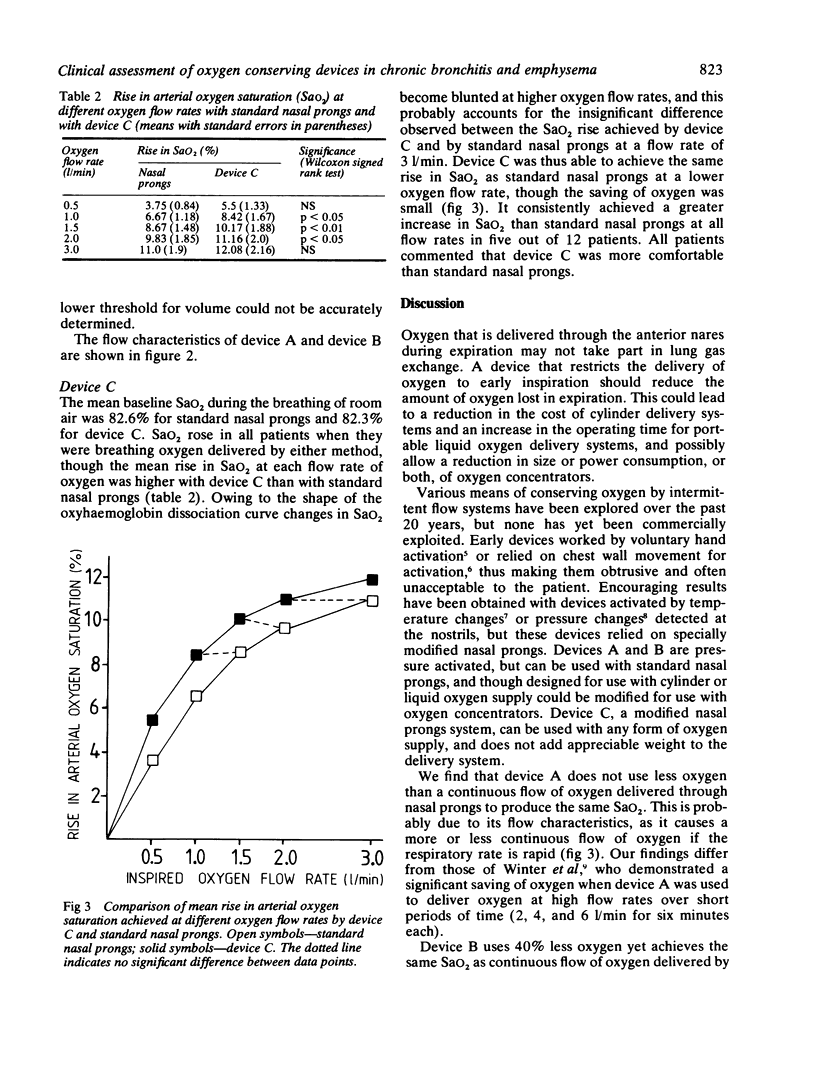
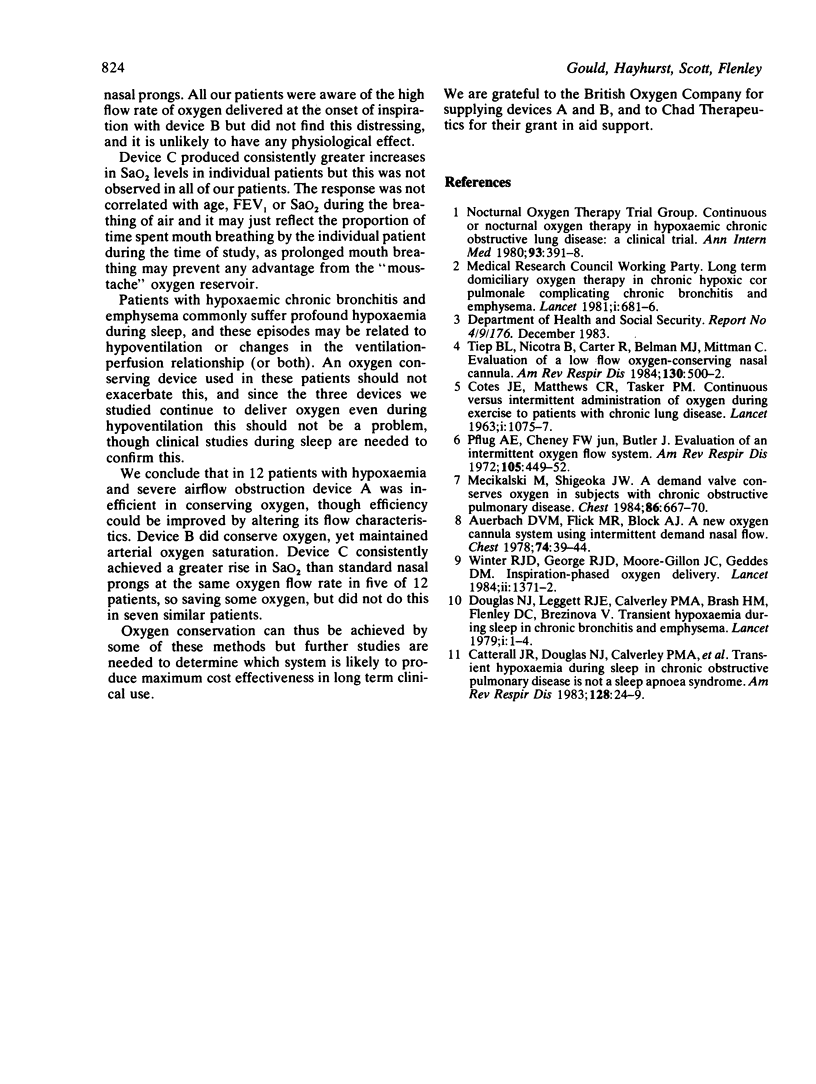
Selected References
These references are in PubMed. This may not be the complete list of references from this article.
- Auerbach D., Flick M. R., Block A. J. A new oxygen cannula system using intermittent-demand nasal flow. Chest. 1978 Jul;74(1):39–44. doi: 10.1378/chest.74.1.39. [DOI] [PubMed] [Google Scholar]
- COTES J. E. Continuous versus intermittent administration of oxygen during exercise to patients with chronic lung disease. Lancet. 1963 May 18;1(7290):1075–1077. doi: 10.1016/s0140-6736(63)92113-5. [DOI] [PubMed] [Google Scholar]
- Catterall J. R., Douglas N. J., Calverley P. M., Shapiro C. M., Brezinova V., Brash H. M., Flenley D. C. Transient hypoxemia during sleep in chronic obstructive pulmonary disease is not a sleep apnea syndrome. Am Rev Respir Dis. 1983 Jul;128(1):24–29. doi: 10.1164/arrd.1983.128.1.24. [DOI] [PubMed] [Google Scholar]
- Douglas N. J., Calverley P. M., Leggett R. J., Brash H. M., Flenley D. C., Brezinova V. Transient hypoxaemia during sleep in chronic bronchitis and emphysema. Lancet. 1979 Jan 6;1(8106):1–4. doi: 10.1016/s0140-6736(79)90451-3. [DOI] [PubMed] [Google Scholar]
- Mecikalski M., Shigeoka J. W. A demand valve conserves oxygen in subjects with chronic obstructive pulmonary disease. Chest. 1984 Nov;86(5):667–670. doi: 10.1378/chest.86.5.667. [DOI] [PubMed] [Google Scholar]
- Pflug A. E., Cheney F. W., Jr, Butler J. Evaluation of an intermittent oxygen flow system. Am Rev Respir Dis. 1972 Mar;105(3):449–452. doi: 10.1164/arrd.1972.105.3.449. [DOI] [PubMed] [Google Scholar]
- Tiep B. L., Nicotra B., Carter R., Belman M. J., Mittman C. Evaluation of a low-flow oxygen-conserving nasal cannula. Am Rev Respir Dis. 1984 Sep;130(3):500–502. doi: 10.1164/arrd.1984.130.3.500. [DOI] [PubMed] [Google Scholar]
- Winter R. J., George R. J., Moore-Gillon J. C., Geddes D. M. Inspiration-phased oxygen delivery. Lancet. 1984 Dec 15;2(8416):1371–1372. doi: 10.1016/s0140-6736(84)92062-2. [DOI] [PubMed] [Google Scholar]


